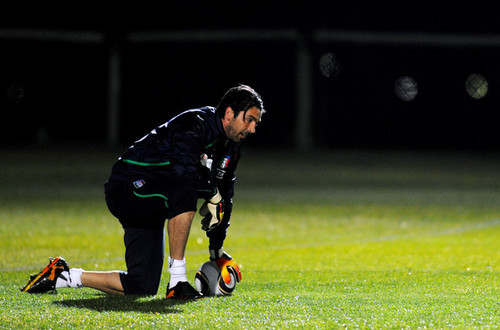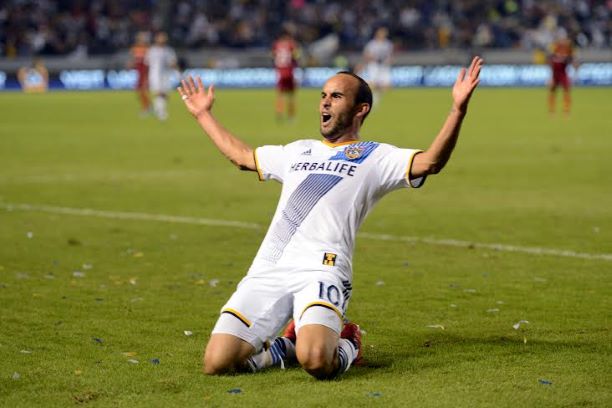The End Of An Era For Italy?
The End Of An Era For Italy?


For Italy, major international tournaments aren’t supposed to be an exercise in anxiety. Gli Azzurri, as the Italians are known, are not supposed to sweat out the group stages of such competitions, fixated on conspiracy theories while awaiting reports from other cities which will reveal their fate. The Italians are supposed to be among the game’s royalty, a country that can book its dinner reservations for the night before a semi-final months before kickoff – masters of their own destinies.
Yet, as gli Azzurri prepared for Monday’s match against Ireland, shaking hands lifted espresso cups from Milan to Palermo across a nation wrought with the fear that another early exit from a major international tournament was to be their fate, a mere two years after upstarts Slovakia sent the Italians packing after group play following a downright dismal showing in South Africa. The faithful remain apprehensive on the eve of gli Azzurri’s quarterfinal clash against England – a team that, historically, were a source of laughter for the Italians, rather than a legitimate threat. Somehow, in just six short years, this has become the new normal for the Azzurri.
The focus of much of the attention gli Azzurri have garnered since the tournament began has been the Italians’ apparent efforts to copy the style of their European neighbors, forging ahead with a possession-oriented, pass-happy style foreign to generations of Italians accustomed to watching the defensive approach, the dreaded catenaccio that has become synonymous with the Italian game, that made Italy a four-time world champion, most recently in 2006. In what was perceived as a radical move, in Italy’s first two matches Cesare Prandelli fielded just three defenders, rather than the customary four, in an attempt to generate more attack through the midfield and strikers – with mixed results. In his press conference after a disappointing draw with Croatia, Prandelli spoke of the struggles of this relatively novel approach, saying that gli Azzurri must keep the faith.
Yet Italy may not be able to fix its problems with stylistic shifts. Despite the revelation of Italy’s apparent conversion to the religion of total football, it has yet to do what Europe’s rising stars have done during the past fifteen years to solidify their place among the great footballing powers of the new century: invest in the country’s youth, remodel their development programs, and, in certain cases, look to players of non-traditional origins to augment what a country of just sixty million can produce. The Italians, unlike their German, Spanish and Dutch counterparts, are an older, incredibly homogenous group – one that no longer reflects the realities of a changing Europe. This simple reality could cost them, despite Prandelli’s revamp of the entire Italian ethos.
Italy once had one of the greatest talent pipelines in the world, a veritable well of depth from which to select its stars. Its teams won five of the seven European Under-21 championships in the years between 1992 and 2004. Since then, the best result the Azzurrini have been able to produce is a loss in the semi-finals to Germany in 2009. The Italians failed to even qualify for the most recent championship in 2011.
It appears that the once-bottomless well of Italian talent has run dry. Of the fifteen members of gli Azzurri who have thus far appeared at the Euros, just one is younger than 24. For all its dynamism, the Serie A is one of Europe’s older leagues, one in which younger players often struggle to make the starting line of the top teams. Prandelli acknowledged in another presser that Italy’s national program has struggled to develop a new generation of stars.
Gli Azzurri appear downright decrepit when compared to die Mannschaft, seven of whose players are aged 23 or younger, including stars like Mesut Ozil and Thomas Muller. The backbone of Bayern Munich, this year’s Champions League finalists, is similarly youthful. This state of affairs is the direct result of an about-face by the German Football Association after an embarrassing 3-0 loss to Croatia in the quarterfinals of the 1998 World Cup and a disastrous one-point performance at the 2000 Euros. Faced with such humiliation, the Germans took swift action – their development program was rebuilt from the ground up, creating an athletic, technically gifted and more creative generation of players. Notably, Spain, who now arguably boasts the best side the world has ever seen, made a similar decision in the mid-nineties after a series of early exits from major international tournaments. In addition, Germany followed France’s lead by opening its team to players of non-traditional origins. The core of France’s stellar squads of 1998 and 2000 - the years in which France became the first nation to capture back-to-back World and European titles - was of North African descent, led by Zinedine Zidane, whose parents are Algerian. A little over a decade later, Germany’s current team includes Mesut Ozil, who is Turkish, Mario Gomez, who is half-Spanish, and Jerome Boateng, who is of Ghanaian descent. In stark contrast, gli Azzurri’s squad contains only two players of colour, one a relative unknown. Despite the fact that Italy is now home to roughly five million foreign residents, the grand majority of Italy’s players are of traditional Italian descent.
Why does this matter? In order to compete, Italy must, first and foremost, be able to field a team. When ruminating on this simple truism, it becomes apparent that the explanation for the decline of the Italian dynasty may have nothing to do with the sport, but with societal factors – namely, Italy’s staggeringly low birthrate.
In addition to its more traditional woes – bombs, corruption, recession, political turmoil - Italy is slowly coming to acknowledge a far more insidious challenge. A change is occurring in Italy, one which will remold society by the turn of the century, creating a land where the old outnumber the young and the large, close families of myth and tradition are gone forever. Italian women now have fewer children than women in any other nation. According to Italy’s national institute for statistics, if current trends continue, then by the World Cup in Qatar, over a quarter of Italy’s population will be over 65 years old. As it is, more than one-fifth – twenty percent - of Italy’s population is over 65 years old. Italy has moved from a time when it encapsulated a stereotype of large families and frolicking bambini to its present reality: a rapidly aging, swiftly shrinking population. Two years ago, Cardinal Angelo Bagnasco, head of the Italian Bishops’ Conference, in a homily given at mass in Genoa, declared that Italy was facing “a serious cultural catastrophe” because of its low birth rate. Bagnasco went on to suggest that unless the balance of Italian demographics was restored, Italian society would become one that was “seriously mutilated and unable to function.”
Most analyses of the age distribution of a nation’s population examine its economic significance. However, it stands to reason that the inevitable strain of resources wrought by such a skewed population distribution will also have a significant effect on Italy’s sporting success. Economists Simon Kuper and Stefan Szymanski – the first of their ilk to apply econometrics to the wonderful world of football – have singled out a nation’s population as one of the three dispositive factors of that nation’s success at a major international tournament. Indeed, a myriad of scientific studies have shown that nations with a large population tend to be more successful in international sports competitions than less populous nations. Statistically speaking, the population of a nation influences sporting success via variation in physical characteristics within this population. Essentially, the larger the population, the greater the number of genetically endowed athletes with the physical characteristics suited to superior athletic performance. While Italy does have a reputation for prolonging the careers of its players – icons such as Gianluigi Buffon, Andrea Pirlo and Alessandro Nesta are still revered as some of the best of the business, despite being arguably years past the prototypical prime – ultimately, it cannot prolong them indefinitely, and there remain few rising stars poised to take their place.
Thus, a potential explanation for the stagnation of gli Azzurri is one that has nothing to do with the sport. Italy’s dynasty is dying with its population as it ages. If this state of affairs persists, the laws of statistics will ensure a draught that could dry up Italy’s well of talent entirely – starving a nation thirsting for a return to the glory of old.
Nor is it likely that the salvo for gli Azzurri’s ills will be what it has been for Germany and France. For years, the Italian political right has waged a vicious campaign against the influx of immigrants into Italy, criminalising them as clandestine migrants who ought, in the words of Irene Pivetti - of the controversial Lega Nord and former speaker of the Lower House - be thrown into the water. Such radical attitudes may be a relic of the past; Mario Balotelli is as cultlike a figure as he is controversial. However, the fact that the word oriundi is still bandied about to differentiate players such as Pablo Osvaldo and Thiago Motta from the native-born-and-bred when they have donned la Nazionale’s colours may yet indicate a begrudging resistance to importing foreign-born Italian talent.
However, if Italians are not willing to augment their own population, then they must come to terms with a change in how they view immigrants, seeing these new Italians as a vital resource rather than unwanted invaders. If they remain loath to do either, they may have to orient themselves with yet another altered reality: one in which the glory of gli Azzurri is nothing but another epoch in Italian history.







